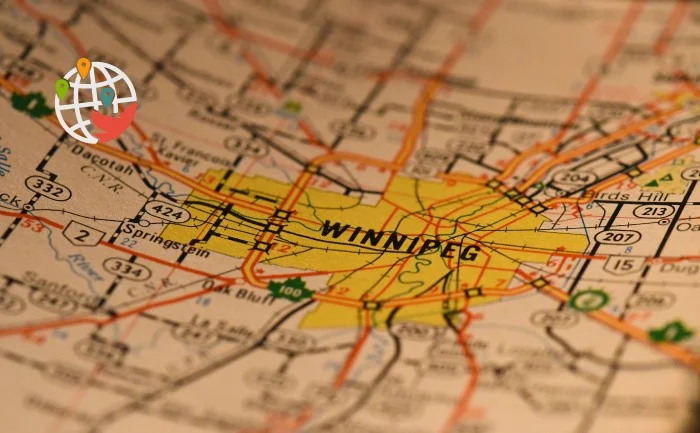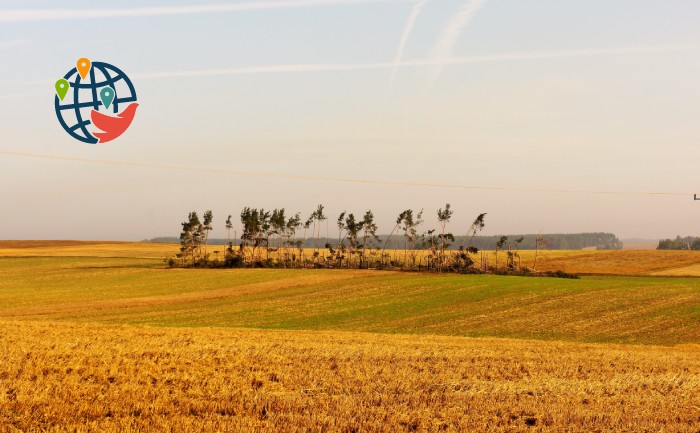Manitoba: a Province With a Rich History and Economic Potential

Manitoba is often considered one of Canada's most beautiful provinces, and it's easy to see why – it's home to over 110,000 lakes of various sizes!
In this article, we'll cover the following topics:
- geographic location;
- climate;
- where to live;
- crime;
- education;
- work and wages;
- in-demand professions;
- prices and taxes;
- healthcare;
- what to see;
- immigration programs.
Geographic Location
The province is located in the southern and western regions of the country, making its lands very fertile. Agriculture is Manitoba's main economic resource. Other important sectors include transportation, mining, manufacturing, forestry, tourism, and energy.
Fun fact! Although the province's name is directly related to Lake Manitoba, there are several theories about its origin. One suggests that "Manitoba" comes from the Assiniboine words "mini" and "tobu," meaning "lake of the prairie." Another theory claims it derives from "maniotapau" in the Cree language, describing the sound of waves hitting pebbles. Legend has it that this sound is made by the spirit Manitou beating a drum.
Manitoba borders Ontario to the east, Saskatchewan to the west, Nunavut and the Northwest Territories to the north, and the U.S. states of North Dakota and Minnesota to the south. The province's northeast coast is on Hudson Bay.
With its moderate climate, low housing costs, affordable utilities, and food prices, Manitoba is recommended for families with children. The province also has various international communities, making it easier for immigrants to find support, assistance, and social connections.
The province has a population of over 1.4 million. The official languages are English and French. The capital city is Winnipeg.
Climate

Manitoba has a continental climate. Temperatures generally decrease from south to north, while precipitation decreases from east to west.
The province has good climate conditions. The only downside to hot and humid summers is the frequent occurrence of tornadoes. These cause significant damage to the province annually. For example, in 2007, Manitoba experienced Canada's most powerful tornado, rated at the maximum level 5. The year before, in 2006, the province recorded 15 tornado events.
Average daily maximum and minimum temperatures for select Manitoba cities:
| City | July (℃) | January (℃) |
| Winnipeg | 26/13 | -13/-20 |
| Portage la Prairie | 25/13 | -12/-23 |
| Dauphin | 25/12 | -12/-23 |
| Brandon | 25/11 | -13/-24 |
| The Pas | 23/12 | -16/-26 |
| Thompson | 23/9 | -19/-31 |
Where to Live
Winnipeg
More than half of the province's population — about 910,000 people — live in the capital and its suburbs. Winnipeg is located just 100 kilometers from the Canada-US border, in the Canadian Prairies. Due to its location, the city is prone to flooding. Winters are harsh, with average temperatures between -18 and -23 degrees Celsius, but summers are warm, with averages from 18 to 26 degrees.
Winnipeg is North America's largest grain-growing center. Besides agriculture, such sectors as finance, trade, education, healthcare, and manufacturing are well-developed. The city houses the main factory of the Royal Canadian Mint, which produces nearly all Canadian coins and coins for dozens of other countries. The largest employer in the city is the federal government which engages educational and medical institutions.
The city also has many schools, several universities including a French-language one, and colleges.
However, like the rest of the province, the crime rate is quite high. This trend is starting to improve: over the past two years, crime has decreased by 2.2%, though it remains high overall.
Brandon
Brandon is the second-largest city in the province. Itconsistently ranks among the best cities in Manitoba, though its population is much smaller, around 56,000 people.
The climate is considered moderately cold: winter temperatures drop to -18 to -24 degrees Celsius, while summer averages range from 17 to 26 degrees.
Brandon has a developed manufacturing industry and agriculture sector. The city also has many educational institutions, including schools, colleges, and universities.
Springfield
Springfield is a large rural municipality bordering Winnipeg. It's known for its low prices and low unemployment rate. The main economic activity in Springfield is farming. However, many residents work in Winnipeg, making it an excellent option for those who want to combine the benefits of working in the provincial capital with living in a quiet rural area.
Excellent Education for Everyone

Currently, Manitoba has a law requiring children aged 7 to 16 to attend school. Primary education is in English or French. The province has 35 government-subsidized schools and 44 non-subsidized schools. These schools are not required to follow the provincial curriculum and can modify it.
Manitoba is also known for its universities:
- Université de Saint-Boniface (French-language);
- Canadian Mennonite University;
- University of Winnipeg;
- University of Manitoba (considered the most prestigious);
- Brandon University;
- Booth University College;
- Providence University College;
- University College of the North.
Studying at Manitoba's universities is considered prestigious, with degrees recognized in most countries worldwide. Moreover, tuition fees in the province are relatively low: at the University of Manitoba they start from $16,000 CAD per year.
A unique feature of the province! Manitoba has a huge number of international students. One in eight students here is from abroad. This is largely due to the fact that if you enroll in any university, your children may be eligible for free schooling.
An Excellent Choice for Families With Children

The province has many educational programs, so there are lots of children here and they feel quite comfortable.
However, daycare centers may be quite expensive, unlike schools where an international student's child may be eligible for free education. It's most difficult to find care for children aged 3 months to 2 years. For children 2-5 years old, it's much easier to find a place in a daycare. You can get complete information about available preschools on the official website.
In general, childcare facilities in the province are divided into 4 types:
- non-profit learning and care centers;
- commercial daycares;
- private home daycares (accept a maximum of 8 children up to 12 years old, including the owner's children);
- unlicensed home daycares (also 8 children up to 12 years old).
The shortage of daycare places is so severe that parents register their child for preschool right at birth. You can do this through the official form.
All daycares in Manitoba are fee-based. Depending on the facility, services offered, child's age, and time spent in daycare, the monthly price can range from $500 to $900 CAD. If the daycare receives support from the provincial government, families may be eligible for subsidized services at $10 CAD per day under a new federal project that Manitoba has joined.
Crime
Despite many advantages of Manitoba, it's worth noting that the crime rate is high here. There are about 10,600 crimes per 100,000 people, and this number has been increasing over the years. The crime severity index is also rising, currently at 146.5 points.
Winnipeg is on the list of 10 most dangerous places to live in Canada.
What about jobs and salaries?

It's fairly easy to find work in the province. The unemployment rate here is only 5.9% – lower than the Canadian average. The minimum wage in the province will increase to $15.80 CAD per hour from October 2024. The average annual income in Manitoba is approximately $56,550 CAD.
You have seen 56% of the text.
This article is available only to users with Premium Access.
Want to get access to this and other Premium articles? Subscribe to Premium Access!































